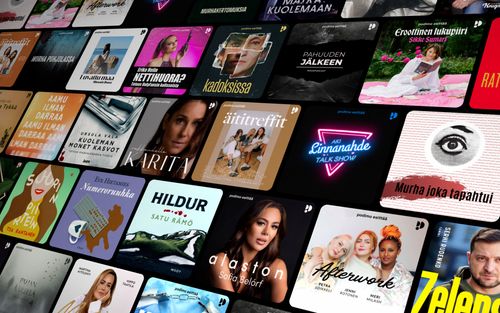Holly Schroeder talks about working memory and ADD
A11y Rules Soundbites - Podcast tekijän mukaan Nicolas Steenhout

Kategoriat:
Holly Schroeder says she navigates away immediately if a page is too busy. Too much stimuli overwhelms her. She can't process the information properly, and that interferes with her ability to complete what she was trying to do in the first place! Thanks to Tenon for sponsoring the transcript for this episode. Transcript Nic Hi, I'm Nic Steenhout. And you're listening to the accessibility rules soundbite, a series of short podcasts, where disabled people explain their impairments and what barriers they encounter on the web. First, I need to thank Tenon for sponsoring the transcript for this episode. Tenon provides accessibility as a service. They offer testing, training, and tooling to help fix accessibility, fast. So today I'm speaking with Holly Schroeder. Hi, Holly, how are you? Holly I'm great. Thanks for having me today. Nic Thanks for being on this is going to be fun. So the format of the show is the same as usual, three questions. And the first one is maybe not the easiest. What is your disability or impairment, Holly? Holly Well, that's a little bit of a trick question for me. I have multiple disabilities. And today, I think we're gonna focus on my working memory disability and ADD, and how that impacts my web experience. Nic All right, I think you were saying to me that there is a link between what's happening between ADD and your working memory, one makes it worse than the other, I think. Holly I feel like it's really hard to separate them sometimes. So when I'm trying to, you know, if I go to a website, whether I'm on a mobile device, or I'm actually on a desktop computer or a laptop, if there is a lot of busy content on a website, whether you know if it's visually busy, or if it's got, you know, just lots of color, or if there's motion, that can be... I get overstimulated very easily. And so it can make it really difficult for me to focus on whatever it is they are wanting me to focus on. And then the working memory comes in, when I'm trying to complete tasks that I'm wanting to do. So maybe I go to a website, and I'm wanting to get the phone number for something. If they don't have a clickable link, and I need to try and remember the phone number so that I can dial it on my phone. It might take me five attempts to complete that task if I don't have pen and paper handy. Nic Wow. That's, you know, that's, I think it might be more common than people think. But it's such a big thing that we don't necessarily think about. Holly Yeah, and there's certain things like parallax effects really, almost make me feel seasick. Nic Yeah. parallax is is a big thing I spoke with Julia Ferraioli about that a while back, and, yeah, so many people have physical reactions. You know, it's it's a problem when your web design starts making people physically sick. Holly Exactly. I think a lot of people know, okay, we can't use Blinky things, because that could cause a seizure. But they don't think about the impact of maybe having I'm thinking about one website in particular, they had a video clip on their homepage. And it was a sped up version of a networking event. And I literally had to scroll further down on the page. Because just having that motion made me feel off kilter. It was like being carsick. Nic Yeah, that's no good. Holly, I think we've actually answered the question before I asked a question about your greatest barrier, would you say these combination of you know working memory and ADD and clickable elements and movable parts, would you say that's your greatest barriers related to these conditions? Or do you have another greatest barrier that you think is more more important? Holly I think that it really comes in to play with those two particular things. One, if I will navigate away immediately if something is very visually busy, whether it's got its movement or color or design that's just kind of cramped. It's just too too much stimuli all at

